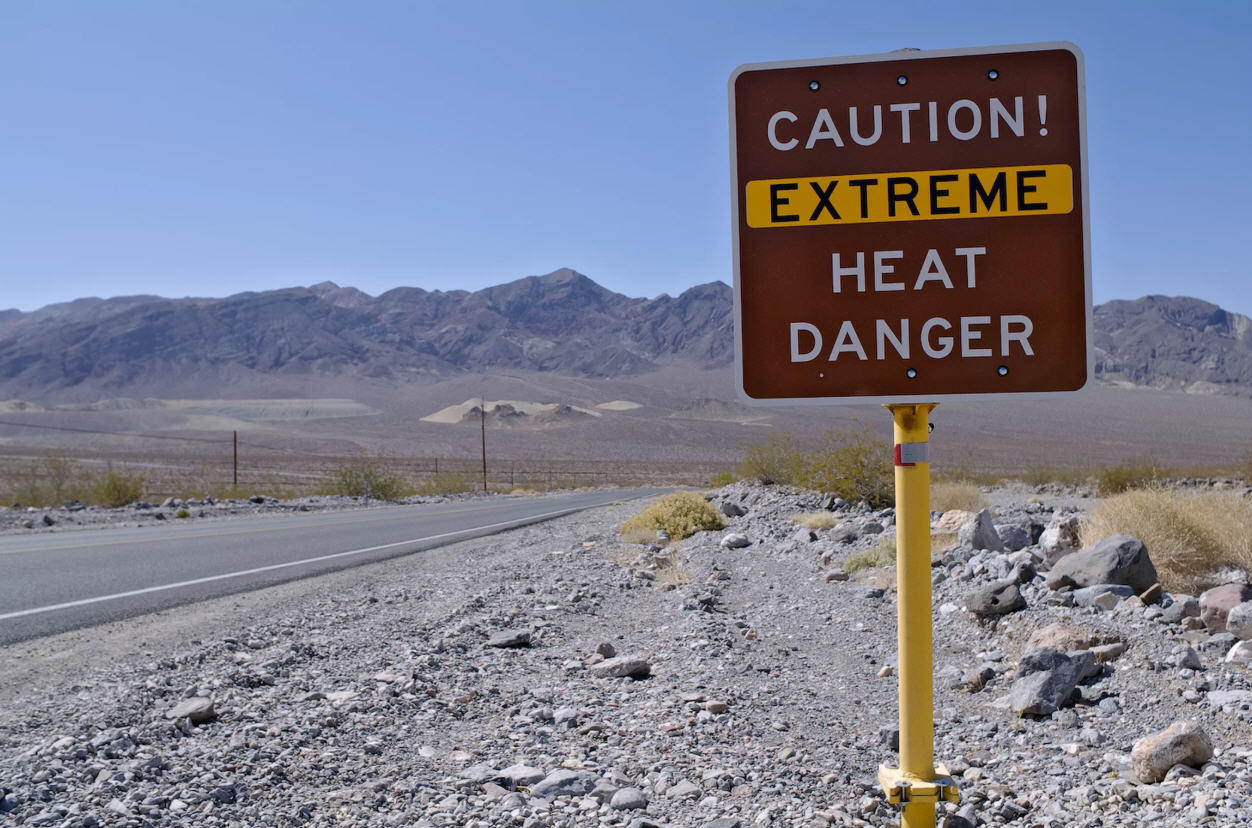People also ask
Web results
begin quote from:
Aug 1, 2018 - Death Valley smashes heat record for 2nd year in a row. For the second year in a row, July in California's Death Valley National Park snagged the award for the "hottest month ever." Congratulations to this national treasure that is truly an unstoppable inferno.
Aug 1, 2018 - HomeFeed ItemsDeath Valley smashes heat record for second year in a row. Death Valley smashes heat record for second year in a row.

Death Valley smashes heat record for 2nd year in a row
For the second year in a row, July in California's Death Valley National Park snagged the award for the "hottest month ever." Congratulations to this national treasure that is truly an unstoppable inferno.
The finding was first reported in Forbes magazine Tuesday, in an article by Brian Brettschneider, a climate scientist at the University of Alaska, Fairbanks. The World Meteorological Organization has yet to confirm Brettschneider's assessment, but considering the data, that group will likely agree.
While many of us sweated out (and probably complained about) temperatures of over 90 degrees Fahrenheit (32.2 degrees Celsius) last month across much of the U.S., Death Valley's Furnace Creek weather station recorded an average temperature of 108.1 degrees F (42.2 degrees C), according to the National Oceanic and Atmospheric Administration's temperature database, xmACIS2. To add to the misery, a whopping 21 days in July saw maximum temperatures of 120 degrees F (48.9 degrees C) or higher in Death Valley. While unusual, that stretch of days is, surprisingly, not a record for this area; 29 days in July 1917 reached temperatures of 120 degrees F (48.9 degrees C) or higher.
Death Valley is no stranger to extreme weather, thanks to the area's below-sea-level elevation and the Sierra Nevada mountain range, which prevents rain from reaching the region. In fact, the all-time hottest temperature ever measured on Earth came on July 10, 1913, when Death Valley hit a sizzling 134 degrees F (56.7 degrees C).
But now, for the first time, Death Valley has broken the record for hottest monthly temperature anywhere in the world two years in a row. Last July, the average temperature was 107.4 degrees F (41.9 degrees C). Brettschneider predicts that this is a pattern and said record temperatures will routinely surpass these marks in coming years.
So, is this a result of climate change, or is it simply natural variability in an already-extreme landscape?
"I think it's a little bit of both," said Marshall Shepherd, a climate scientist at the University of Georgia. "Extreme heat is one of the things that we can pin down to climate change with a high degree of certainty," Shepherd told Live Science. But natural variability is still happening within this warming trend, he said.
Shepherd compared the situation to a baseball player who has a natural ability for hitting lots of home runs, "but then you add in steroids and you give him a boost." In other words, climate change is like a super-effective steroid for Death Valley's natural ability to turn into a scorching-hot furnace every summer.
What's more, said Shepherd, when considering Death Valley's blistering heat in the context of record-high temperatures around the world this year, "it's clear to me that we cannot write off extreme heat events as natural chance anymore."
This article originally appeared on Live Science.

No comments:
Post a Comment